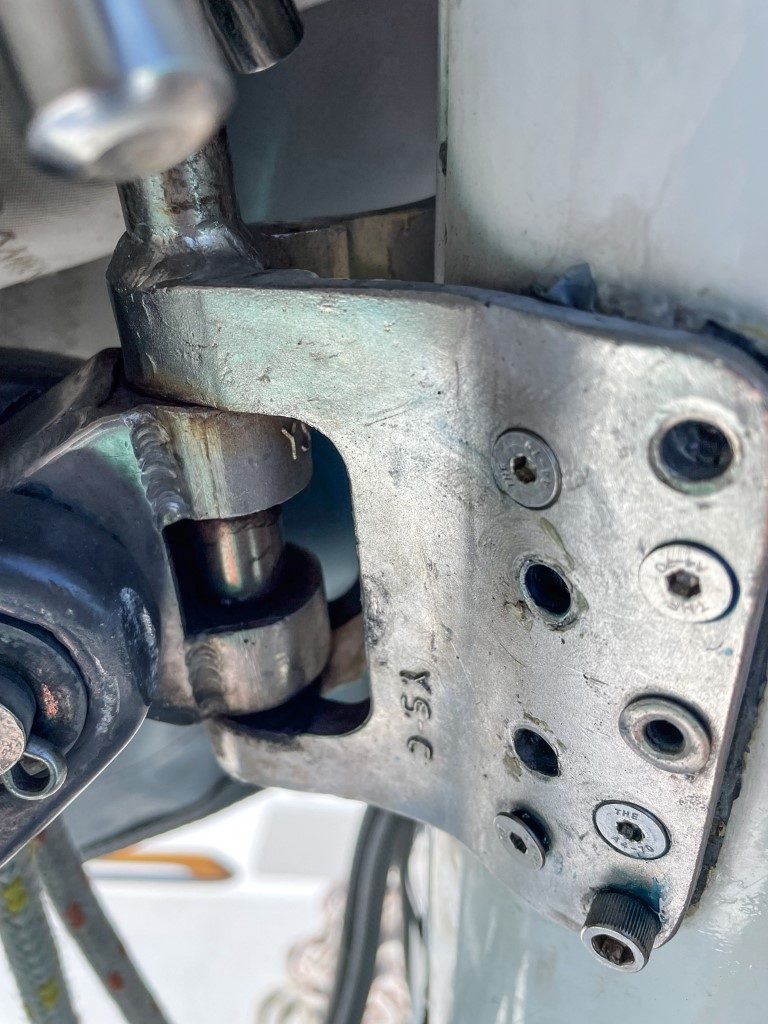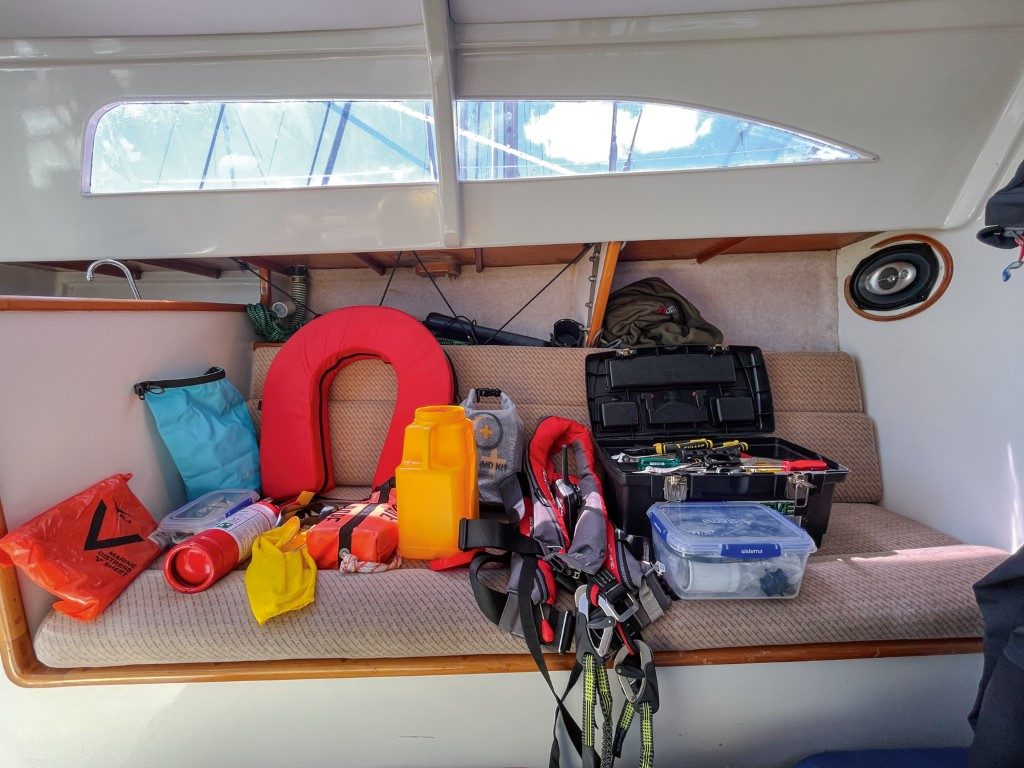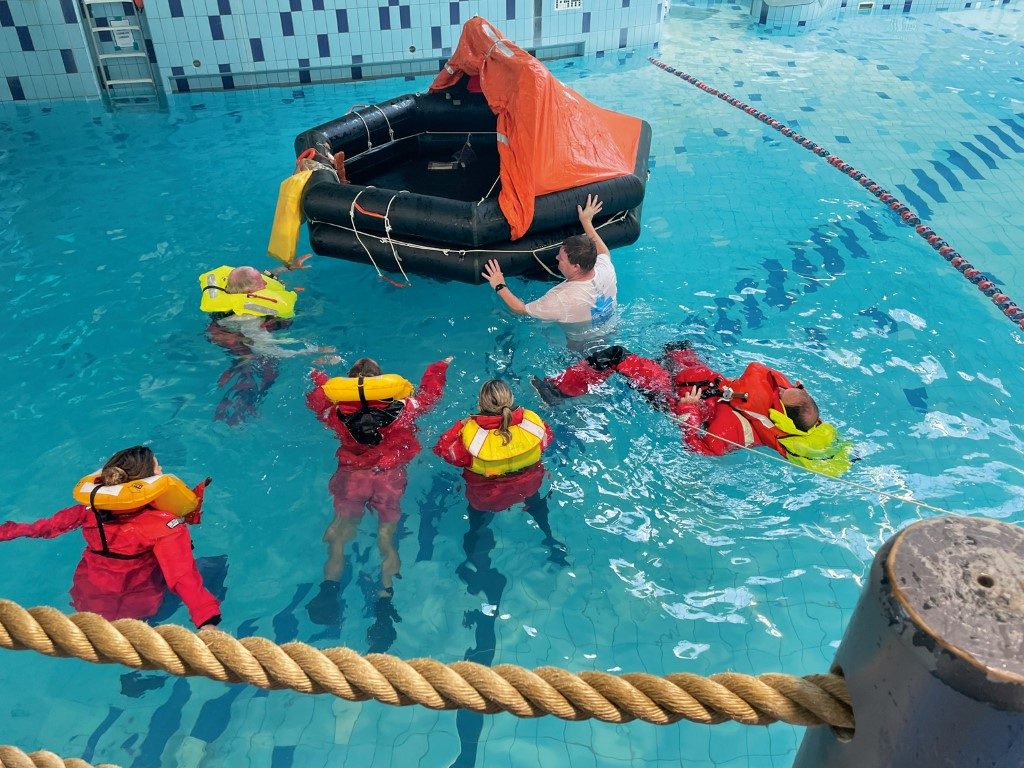

We have a Cat 1 Safety Certificate requirement for New Zealand-flagged vessels departing on an international voyage. It dates back to 1956 and has had various iterations. In a nutshell, under the Maritime Transport Act, the Director of Maritime New Zealand must be satisfied that the vessel, its equipment and crew, are suitable for the intended voyage. Yachting New Zealand and its network of Inspectors fulfill this requirement on behalf of the Director.
The issues surrounding the Cat 1 Safety Certificate are entrenched in the New Zealand international sailor’s psyche. Every year many hours are spent by what appears to be an increasing number of people debating the different issues surrounding yacht inspections.
Whatever your opinion of Cat 1, it’s a requirement for a New Zealand-registered vessel intending to leave the country. When approached in a constructive manner every sailor will gain from the process of gaining the certificate.
Should a skipper prefer not to undertake the process, there are several international registers that, for a fee, will accept a small vessel. Once that vessel is foreign-flagged, it does not have to comply with the Cat 1 inspection process. I do not support this option for several reasons, but they are not relevant to this article.
IN WATER INSPECTION
This is the greater part of the inspection and can be divided into Vessel, Equipment and Crew. For Equipment, lay it out in the order that it appears on the checklist, so the inspection is easier.
- Stability: Does it meet the stability requirements for Cat 1 as defined in the regulations? Some older New Zealand-built or -designed vessels with a history of voyages already undertaken can be grandfathered in. For example, the Farr 11.6 (38) does not meet the stability requirements under Cat 1 but is well-proven offshore.
- Suitable construction: This is a difficult area and to a certain extent has been helped by the CE classifications of European production vessels. Vessels like the Townson 32 typically are unsuitable for offshore conditions. They were never intended to venture offshore, but several have been modified and strengthened to do so.
- Cockpit drainage: There are volume calculations available.
- Companionway: It must be able to be secured from above and below. For example, a crew inside must be able to exit when the companionway is secured and vice versa. If washboards are fitted they should have lanyards to ensure that they can be secured to the vessel.
- Life lines: In good condition, correctly-sized, stanchions correctly spaced, tight and at the right height.
- Jack lines: adequate breaking strain (2,200kg), good condition, well thought out leads so that a crew can work the full length of the deck without unclipping.
- Standing rigging: the inspector will look carefully (up to head height) however the inspection is not a rig check. Pins or lock nuts on the rigging screws.
- Running rigging: in good condition, not chafed or damaged.
- Gooseneck: this is a weak point on every rig and requires constant monitoring and maintenance.
- Deck gear: (winches, clutches, deck organisers, turning blocks) undamaged and working correctly. Layout that is easy to handle.
- Sails: the Inspector will ensure that the sails meet the regulations.
- Steering gear: is working correctly and does not show signs of wear.
- Emergency steering: this should be able to be demonstrated if required.
- Navigation lights: working and correctly-configured.
- Lockers, freezer tops, bunk tops, cabin soles: are secured so that in the event of a knockdown they cannot become loose and the contents spilled across the cabin.
- Windows – meet the requirements as specified. This is a controversial area and will take some navigating. The intent of the regulation is that the vessel cannot lose a window therefore there will be a range of options to ensure that this doesn’t happen. Working with the Inspector will ensure that this doesn’t become a stumbling block.
- Gas installation: if the vessel has gas installed a current installation certificate is required.

- Liferaft: in service, correctly-sized for the number of crew. There are liferafts and liferafts – ensure yours meets the regulations. That is – manufactured to ISO9650 specifications, packed to more than 24 hours, and an ‘ocean’ category raft.
- Life jackets: in service, lights and crotch straps fitted. Many people will add personal AIS and/or a personal locator beacon (PLB), but at this stage it’s not required for Cat 1.
- Harnesses and tethers: most crew are using life jackets as a harness so the Inspector will check that there is the correct number on board and that they are in serviceable condition.
- Life rings x 2: one with light, dan buoy, whistle and drogue; one with whistle and drogue. Most vessels will be using an inflatable option so the Inspector will require the service certificates and be satisfied that the crew are confident about using the equipment.
- First-aid kit: as specified in Appendix 1 of the Safety Regulations of Sailing. This kit is modular so the Inspector will look carefully to ensure that it has all of the relevant modules. The kit has been carefully specified and the required training supports the use of the kit, so don’t try to shortcut the requirements.
- VHF radio: the Inspector will require a radio check while on board, also handheld VHF radios. The Inspector will assess operator confidence using the equipment.
- Offshore communication: an email and voice call from the Iridium, a radio check on the SSB, or an email, voice call and confirmation that the Star Link is configured for offshore use. The requirement for voice communication is clearly specified in the regulations. As with VHF radios, the Inspector will assess operator confidence level when using the equipment.
- Flares: The Inspector might well hand you one and ask you how to fire it. For those of us who wear glasses, having a spare pair in the flare container, along with a leather glove, is a very good idea.
- Bilge pumps: working and correctly-configured.
- Tools: a well thought out tool kit that can be used for the equipment on the vessel.
- Spares: adequate spares to ensure that the vessel can get to a port for assistance. The list can be extensive and varies by boat, but as a minimum: screws, bolts, deck gear, line, fuel filters, oil filters, belts, engine and gearbox oils, and impellers. We left New Zealand with a minimal spares kit and are in the process of sourcing spare alternators (they are hard to source in Southeast Asia).
- Navigation equipment: electronic charting with redundancy and a mixture of cruising guides and hard copy charts for the intended destination.
- Manuals for the equipment on the vessel.
- Vessel manual: there is an example of a manual in the Safety Regulations. The intent of this requirement is to ensure the skipper and crew have thought specifically about their vessel. The manual ensures they are familiar with the equipment and the vessel, and have processes for reefing, abandoning ship, firefighting, man overboard etc. If the skipper is unavailable, the Vessel Manual ensures that the vessel can be run safely and efficiently. It doesn’t have to be elaborate, and a hand-written version is entirely acceptable provided it is relevant and up to date.

- Is the crew adequate for the voyage proposed? At least one person who has undertaken a similar voyage. Half the crew, or a minimum of two people, must have done the Advanced Sea Survival course. I assessed these courses and over the years participated in seven across different providers. Some were better than others and one provider in particular is making an ongoing effort to constantly improve its offering. I learned something in every course, so it’s a matter of keeping your mind open. The courses are valid for five years and are approved by World Sailing for ratified events. One of the providers offers a refresher you are eligible for if your last course was within the last 10 years.
- Offshore Medic: At least one crew member must have this qualification, but two is better. It is a great course that is designed around the first aid kit and has a significant practical component.
- Drills: man overboard, firefighting, abandoning ship, reefing, heaving to, emergency steering etc. Practising is part of voyage preparation. The Inspector will seek to understand whether your crew has the skills and can work together as a team. Having the equipment and not being able to use it is as bad as not having the equipment at all.

OUT OF WATER INSPECTION
THIS IS TO BE UNDERTAKEN within six months of the intended voyage and before fresh antifouling paint is applied. The timing should be taken into consideration while preparing for the voyage and it is sensible to tie it in with other jobs to be completed before departing.
Keeping in mind that the Category 1 process is an ‘inspection’ not a survey, the Inspector will be interested in the following:
- Rudder bearings: How much movement can be observed when moving the rudder from side to side and fore and aft. When a vessel sails a few hundred miles a season, movement in the bearings is unlikely to create an issue and can be rectified easily. However, with over 1,000 nautical miles to sail, compromised bearings will create difficulties that become a logistical challenge in even the larger international centres frequented by New Zealand cruising yachts
- Hull keel joint: There shouldn’t be any movement at this joint. There is much debate about tightening or inspecting keel bolts. As a guide, unless there are signs of movement at the hull keel joint, this area should be left well alone. The Inspector will be looking at the integrity of the vessel structure in addition to the joint to determine whether further investigation is warranted and will defer to a suitably-qualified expert to advise if in doubt
- Through-hulls and skin fittings below the waterline. I would like to say that this only affects older vessels, but Inspectors have seen new vessels with these issues. Inferior material appears to be the main offender but lack of maintenance and early detection of issues such as leaks are among the contributing factors. Every through-hull should have a correctly-sized wooden plug attached by a lanyard and double-opposing hose clamps. In preparation for our current voyage, I went through and checked the size of each plug and found several to be too big, despite them having been there for nearly 20 years! Hoses and skin fittings will be assessed for suitability
- Shaft bearings – cutlass bearings require a little movement for water to provide lubrication and support, but too much movement is an issue
- Propeller – movement in a feathering or folding propeller is an issue
- Anodes – should be correctly-sized and appear to be working as intended – pinking of propeller tips is a concern (an indication of electrolytic activity)
This is by no means a definitive list of an out of water inspection however it will provide an overview of the basics.




